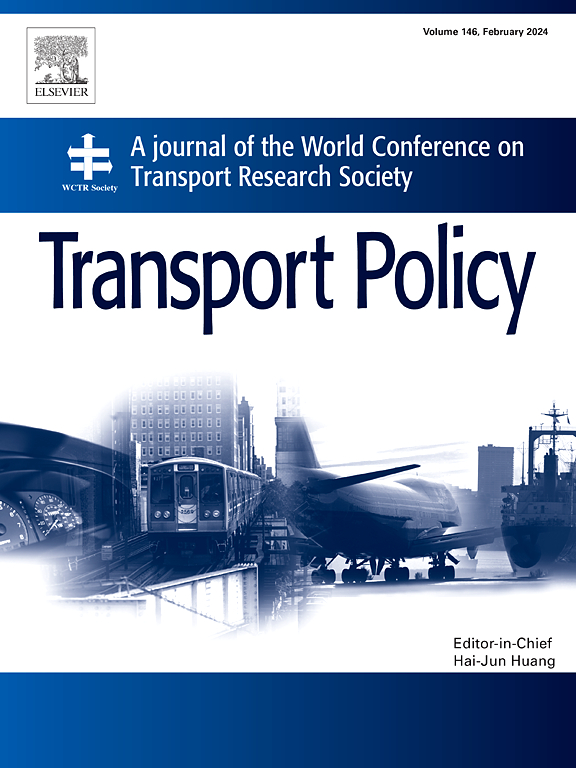Road safety assessment of small management units considering smart roadway retrofitting
IF 6.3
2区 工程技术
Q1 ECONOMICS
引用次数: 0
Abstract
Road safety risk assessment is an important strategy for promoting the optimization of operation and maintenance management. However, the increasingly refined road management units pose challenges to the traditional risk level assessment framework, especially in considering longitudinal assessment and comparison of smart road retrofits. Therefore, this study proposes an assessment framework based on accident risk attributes, which emphasizes refined comparative analysis based on district and county management units. The improved VIKOR model is used to evaluate the current risk level, and the inherent connection between accident risk factors and the severity of consequences is explored based on different risk levels in the same context, focusing on high and low performing districts at different stages of development. The results show that the 11 variables considered in the streamlined framework can widely obtain the regional road safety status. Meanwhile, smart roadway retrofitting significantly improve safety in developed regions, especially through infrastructure upgrades and better traffic management. However, underperforming regions still face challenges related to inadequate lighting, complex terrain, and insufficient traffic control. Targeted interventions, including infrastructure optimization, traffic rule enforcement, and enhanced driver education, are needed to ensure consistent levels of road safety across all regions.
考虑智能道路改造的小型管理单位道路安全评价
道路安全风险评估是促进运维管理优化的重要策略。然而,日益精细化的道路管理单元对传统的风险等级评估框架提出了挑战,特别是在考虑智能道路改造的纵向评估和比较方面。因此,本研究提出了基于事故风险属性的评价框架,强调基于区县管理单位的精细化比较分析。采用改进的VIKOR模型对当前风险水平进行评价,并以不同发展阶段的高绩效区和低绩效区为研究对象,在同一背景下,基于不同的风险水平,探讨事故风险因素与后果严重程度之间的内在联系。结果表明,在流线型框架中考虑的11个变量可以广泛地获得区域道路安全状况。与此同时,智能道路改造显著提高了发达地区的安全水平,尤其是通过基础设施升级和更好的交通管理。然而,表现不佳的地区仍然面临着与照明不足、复杂地形和交通管制不足相关的挑战。需要采取有针对性的干预措施,包括优化基础设施、执行交通规则和加强驾驶员教育,以确保所有区域的道路安全水平保持一致。
本文章由计算机程序翻译,如有差异,请以英文原文为准。
求助全文
约1分钟内获得全文
求助全文
来源期刊

Transport Policy
Multiple-
CiteScore
12.10
自引率
10.30%
发文量
282
期刊介绍:
Transport Policy is an international journal aimed at bridging the gap between theory and practice in transport. Its subject areas reflect the concerns of policymakers in government, industry, voluntary organisations and the public at large, providing independent, original and rigorous analysis to understand how policy decisions have been taken, monitor their effects, and suggest how they may be improved. The journal treats the transport sector comprehensively, and in the context of other sectors including energy, housing, industry and planning. All modes are covered: land, sea and air; road and rail; public and private; motorised and non-motorised; passenger and freight.
 求助内容:
求助内容: 应助结果提醒方式:
应助结果提醒方式:


